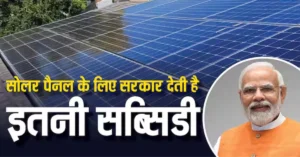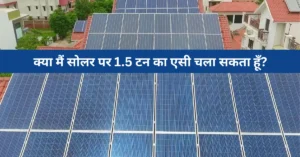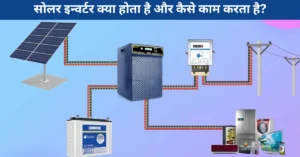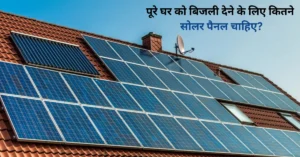The world of solar energy is changing fast—and 2025 is shaping up to be one of the most exciting years yet. Whether you’re a homeowner, a business owner, or someone just curious about clean energy, the latest innovations in solar panel technology are designed to make solar more efficient, affordable, and accessible than ever before.
So what’s new in solar this year? Let’s explore the breakthrough technologies that are powering the future—starting today.
1. Bifacial Solar Panels – Power From Both Sides
Imagine solar panels that don’t just capture sunlight from the top but also reflect it from the ground. That’s exactly what bifacial panels do. They absorb sunlight on both sides, increasing energy output by up to 30%.
They’re ideal for:
- Flat rooftop systems
- Open ground installations
- Reflective environments like water bodies or white rooftops
Why it matters: More energy, same space—smarter investment!
2. Tandem & Perovskite Cells – Breaking Efficiency Records
Traditional panels use silicon—but in 2025, the buzz is all about tandem cells, which stack perovskite materials on top of silicon to absorb more sunlight across a broader spectrum.
Efficiency is now reaching 30% and beyond, compared to 18–20% for standard panels.
Why it matters: Get more power from the same panel, perfect for limited rooftop spaces.
3. Heterojunction (HJT) & Multi-Busbar (MBB) Panels – Built for Performance
If you’re living in a hot region (hello, India!), HJT technology is a game-changer. These panels perform better in high temperatures, keeping efficiency levels steady when others drop.
Add to that Multi-Busbar technology—which improves electrical flow and reduces losses—and you’ve got some of the most reliable and long-lasting panels available.
Why it matters: Better performance year-round, even during summer heatwaves.
4. Self-Cleaning Nanocoatings – Less Dust, More Power
If you’re living in a hot region (hello, India!), HJT technology is a game-changer. These panels perform better in high temperatures, keeping efficiency levels steady when others drop.
Add to that Multi-Busbar technology—which improves electrical flow and reduces losses—and you’ve got some of the most reliable and long-lasting panels available.
Why it matters: Better performance year-round, even during summer heatwaves.
5. Floating Solar (Floatovoltaics) – Solar on Water
Running out of space on land? Now you can install panels on lakes, reservoirs, and dams. Floating solar not only generates power but also helps reduce water evaporation—great for water conservation in hot climates.
Why it matters: Clean energy + water-saving = a win-win for India.
6. Transparent and Flexible Solar Panels – Solar That Blends In
The future is here: see-through solar panels that can be installed on windows, glass roofs, and skylights. Plus, new flexible panels can be wrapped around curved surfaces or even stitched into fabrics.
Why it matters: Solar can now power your buildings, cars, and even clothes—without compromising design.
7. Smart AI-Driven Solar – Panels That Think for Themselves
AI is transforming how we use solar. Smart solar tracking systems now adjust panel angles throughout the day to follow the sun—increasing efficiency by up to 40%. AI also predicts weather and optimizes energy usage in real-time.
Why it matters: Maximum energy, minimum effort—let the system work smarter for you.
8. Built-In Battery Storage – Power Day and Night
No more worrying about cloudy days or power cuts. The latest solar panels in 2025 are now being paired with built-in storage systems that save extra energy for later use.
Why it matters: Reliable backup power and true energy independence for your home or business.
9. Solar Panel Recycling & Sustainability – A Greener Future
With millions of panels being installed, recycling has become a top priority. The latest systems are now easier to recycle, and new programs are emerging to recover valuable materials like silver, silicon, and glass.
Why it matters: Go solar without leaving a future waste problem behind.
What Does This Mean for You?
Whether you’re looking to lower your power bills, upgrade your current system, or build a brand-new smart home, the technologies in 2025 offer:
- Higher output
- Smarter designs
- Lower maintenance
- More flexibility
And with government subsidies and financing options still available in many parts of India, there’s never been a better time to go solar.







